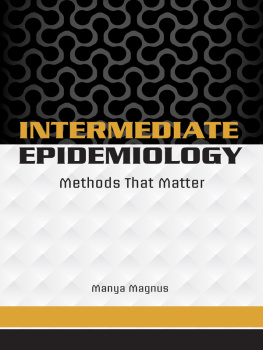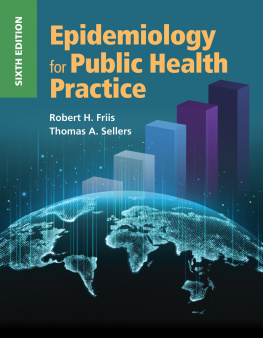

World Headquarters
Jones & Bartlett Learning
5 Wall Street
Burlington, MA 01803
978-443-5000
info@jblearning.com
www.jblearning.com
Jones & Bartlett Learning books and products are available through most bookstores and online booksellers. To contact Jones & Bartlett Learning directly, call 800-832-0034, fax 978-443-8000, or visit our website, www.jblearning.com.
Substantial discounts on bulk quantities of Jones & Bartlett Learning publications are available to corporations, professional associations, and other qualified organizations. For details and specific discount information, contact the special sales department at Jones & Bartlett Learning via the above contact information or send an email to .
Copyright 2016 by Jones & Bartlett Learning, LLC, an Ascend Learning Company
All rights reserved. No part of the material protected by this copyright may be reproduced or utilized in any form, electronic or mechanical, including photocopying, recording, or by any information storage and retrieval system, without written permission from the copyright owner.
The content, statements, views, and opinions herein are the sole expression of the respective authors and not that of Jones & Bartlett Learning, LLC. Reference herein to any specific commercial product, process, or service by trade name, trademark, manufacturer, or otherwise does not constitute or imply its endorsement or recommendation by Jones & Bartlett Learning, LLC and such reference shall not be used for advertising or product endorsement purposes. All trademarks displayed are the trademarks of the parties noted herein. Intermediate Epidemiology: Methods That Matter is an independent publication and has not been authorized, sponsored, or otherwise approved by the owners of the trademarks or service marks referenced in this product.
There may be images in this book that feature models; these models do not necessarily endorse, represent, or participate in the activities represented in the images. Any screenshots in this product are for educational and instructive purposes only. Any individuals and scenarios featured in the case studies throughout this product may be real or fictitious, but are used for instructional purposes only.
This publication is designed to provide accurate and authoritative information in regard to the Subject Matter covered. It is sold with the understanding that the publisher is not engaged in rendering legal, accounting, or other professional service. If legal advice or other expert assistance is required, the service of a competent professional person should be sought.
To order this product, use ISBN: 978-1-284-03610-7
Production Credits
Publisher: Michael Brown
Associate Editor: Chloe Falivene
Editorial Assistant: Nicholas Alakel
Production Manager: Tracey McCrea
Art Development Editor: Joanna Lundeen
Art Development Assistant: Shannon Sheehan
Manufacturing and Inventory Control Supervisor: Amy Bacus
Composition: diacriTech
Cover Design: Theresa Manley
Manager of Photo Research, Rights & Permissions: Amy Rathburn
Cover Image: New Line/ShutterStock, Inc.; Rodin Anton/ShutterStock, Inc.
Printing and Binding: Edwards Brothers Malloy
Cover Printing: Edwards Brothers Malloy
Library of Congress Cataloging-in-Publication Data
Magnus, Manya, author.
Intermediate epidemiology : methods that matter / Manya Magnus.
p. ; cm.
Includes bibliographical references and index.
ISBN 978-1-4496-3962-4 (pbk.)
I. Title.
[DNLM: 1. Epidemiologic Methods. 2. Epidemiologic Research Design. 3. Epidemiologic Studies. WA 950]
RA440.85
362.1072dc23
2014025182
6048
Printed in the United States of America
18 17 16 15 14 10 9 8 7 6 5 4 3 2 1
With infinite love for Magus, Hero, and Gryphon.
Brief Contents
Contents
Acknowledgments
Whom does one thank for how one thinks? In writing this book, countless ideas from professors, family members, colleagues, staff, and participants shared on chalkboards, overheads, and slides, from lecture halls in California and Louisiana to Washington, DC, from books and journals to dusty stacks have populated my thoughts. I hope each one of my colleagues, staff, friends, and family along the way knows how much the teachings they have given me have influenced my writing this book. People both near and far helped me to break ideas down to their essential level, with a focus on the conceptual in epidemiologic methods; they enabled me to become a better teacher through focusing on the foundations rather than on just the lofty. I hope to share some of their essence through this book, supporting students as they learn to apply some of the most exciting and creative scientific methods available to understand public health.
It is easier to know whom to thank for being given the opportunity to write a textbook. Michael Brown of Jones & Bartlett Learning has been enormously supportive of my novel approach to writing this methods text, as well as its previous incarnations. His team at Jones & Bartlett Learning is outstanding on all fronts. Chloe Falivenes regular and friendly check in emails kept me moving and she was available to assist at every turn, while Nicholas Alakel and Amy Rathburn helped keep things on track. Tracey McCrea was a patient and kind shepherd of rough first drafts into clean final documents.
I am grateful for my colleagues in the Department of Epidemiology and Biostatistics at the George Washington University School of Public Health and Health Services, who daily support me in seeing the fun in epidemiology, in particular, Drs. Alan E. Greenberg and Dante Verme, who have taught me much of what I know about research and teaching. Kathryn DeYoung helped enormously with considering how to organize this text, make it clearer, and find illuminating examples. Thanks as well to Dr. Richard Riegelman (editor of the Essential Public Health Series), who was an ongoing supporter of this endeavor. And Dr. Sara Glick, who not only gave me insight into the needs of intermediate epidemiology students, but also gave me a morale boosting conversation that kept me going, just when I needed it. My research collaborators near and farfrom whom I learn each and every day, you are all much treasured. I am also grateful to hundreds of students over the years who have helped refine my teaching style and materials, helping me to improve my delivery of tough concepts to MPH students. To the many students who have said that my courses helped complicated ideas seem straightforward and applicable, I am so thankful, since those teaching methods are what I hope to share in this textbook, and they were honed by excellent questions and feedback over the years. Gratitude goes to my father, Dr. Richard DeLeon, who is my study design pen pal, sharing excitement about methods (and who taught me many of them as well). Finally, to my late grandmother Dr. Ida Russakoff Hoos, who gave me a lens on science and encouraged my curiosity as a child that has shaped my thinking ever since.
The easiest people to thank are those closest to me who stuck with me through every night of preparation and typing: my husband, Magus Magnus, and my children, Hero and Gryphon Magnus. To you, deepest gratitude, for everything.
Preface: The Power of Methods
The purpose of this textbook is to convey the essence of epidemiologic methods so that the student develops an understanding of them in a conceptual way. Through this approach, it will become clear that the methods we use to collect data not only affect the results we find but also the public health recommendations we make. By increasing comfort with real-world design and analysis situations that face the newly minted MPH in epidemiology, students will gain a foundation in the epidemiologic methods necessary to prepare them for practice as epidemiologists. This book is intended to be used for intermediate epidemiology courses in a standard three course methods series, preceded by an introductory course and followed by advanced methods. The focus is on examples and application, structured so that the student is actively engaged in thinking about the methods to yield depth of understanding rather than simply memorization. With the many nuances of the epidemiology tool kit, sometimes its elegance can be challenging when moving from introductory to advanced coursework. The focus of this text is on concepts and application that will delve into these nuances, so that by the time the students reach the advanced coursework, they have an organic and conceptual understanding of epidemiologic methods and are prepared to absorb the more complex and quantitative material. The approach is less quantitative and more applied than other textbooks, striving to integrate into each professors unique pedagogical approach in their own way.
Next page









